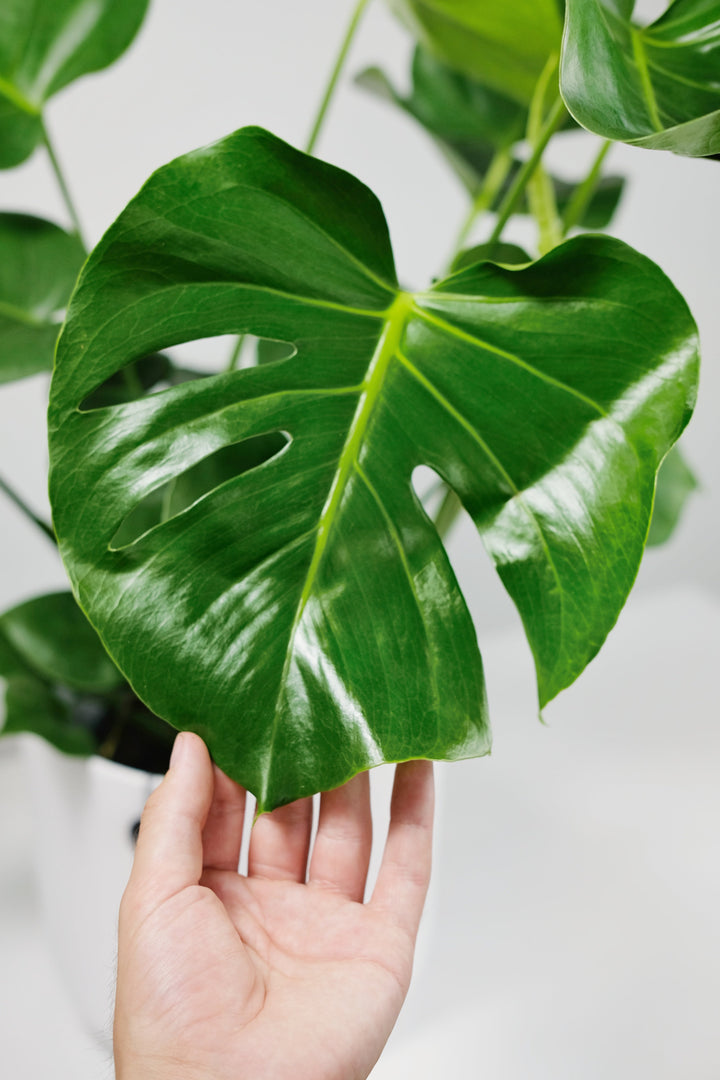Why are the Leaves of My Monstera Turning Yellow or Brown?

If you're a proud plant parent of a Monstera, you know how stunning this tropical beauty can be with its iconic split leaves. However, seeing those lush green leaves start to turn yellow or brown can be concerning. Before you frantically start overwatering or moving your Monstera around your home, take a deep breath. This article will delve into the common reasons behind why your Monstera leaves might be changing color and provide you with practical tips to help your plant thrive.
Understanding Monstera Leaf Color Changes
Monstera plants are generally low-maintenance, making them a popular choice for both beginner and experienced plant enthusiasts. However, certain factors can lead to those vibrant green leaves losing their luster and displaying shades of yellow or brown. Let's explore some of the common culprits behind this issue:
1. Overwatering
Overzealous watering is a common mistake that can cause the roots to suffocate, leading to yellowing leaves. When the soil is consistently waterlogged, it hampers the plant's ability to absorb nutrients, causing the leaves to turn yellow and eventually brown.
2. Underwatering
On the flip side, underwatering can also result in yellow or brown leaves. When a Monstera doesn't receive an adequate amount of water, it can't perform essential functions like photosynthesis properly, leading to leaf discoloration.
3. Improper Lighting
Monstera plants thrive in bright, indirect light. Exposing them to direct sunlight can scorch their leaves, causing them to turn yellow or brown. Conversely, insufficient light can impede the plant's growth and lead to color changes in the leaves.
4. Nutrient Deficiency
A lack of essential nutrients like nitrogen, potassium, or iron can manifest as yellowing leaves in Monstera plants. Nutrient deficiencies hinder the plant's ability to carry out vital processes, resulting in poor leaf health.
5. Pests and Diseases
In some cases, yellow or brown leaves can be a sign of pest infestations or diseases affecting your Monstera. Common pests like spider mites or mealybugs can cause discoloration, while diseases like leaf spot can also lead to changes in leaf color.
Troubleshooting and Remedies
Now that you have a better understanding of why your Monstera leaves are changing color, let's explore some practical steps you can take to address the issue:
1. Assess Your Watering Routine
- Check the moisture level of the soil before watering your Monstera. Ensure that the top inch of the soil has dried out before watering again to prevent overwatering.
- Consider repotting your plant in well-draining soil to improve water absorption and prevent root rot.
2. Evaluate Lighting Conditions
- Place your Monstera in a spot with bright, indirect sunlight to promote healthy leaf growth.
- If your plant is receiving too much direct sunlight, consider moving it to a more shaded area to prevent leaf damage.
3. Feed Your Monstera
- Use a balanced liquid fertilizer to supplement your Monstera with essential nutrients. Follow the instructions on the fertilizer package to avoid overfertilizing, which can also harm your plant.
4. Inspect for Pests and Diseases
- Regularly check the undersides of the leaves and along the stems for any signs of pests.
- If you suspect a pest infestation or disease, treat your Monstera with appropriate insecticidal soap or fungicide to address the issue promptly.
Frequently Asked Questions (FAQs)
Q: Can I save my Monstera if the leaves have turned completely brown?
A: While it's challenging to revive fully brown leaves, you can trim them off to redirect the plant's energy to healthier growth. Focus on providing optimal care to prevent further leaf browning.
Q: How often should I water my Monstera to prevent yellowing leaves?
A: Water your Monstera when the top inch of the soil feels dry to the touch. Adjust your watering frequency based on factors like humidity levels and the size of your plant.
Q: Should I mist my Monstera to increase humidity and prevent leaf discoloration?
A: Misting can help increase humidity levels around your Monstera, especially in drier environments. However, ensure that you're not over-misting, as excessive moisture can also lead to issues like root rot.
For more in-depth care tips and guidance on keeping your Monstera thriving, check out our comprehensive Monstera plant care guide.
Summary
Seeing your Monstera's leaves turn yellow or brown can be a distressing sight, but with the right knowledge and care, you can help your plant bounce back to health. By addressing factors like watering, lighting, nutrients, and pest control, you can create an optimal environment for your Monstera to flourish. Remember, a little extra love and attention can go a long way in keeping those iconic split leaves looking vibrant and lush.
